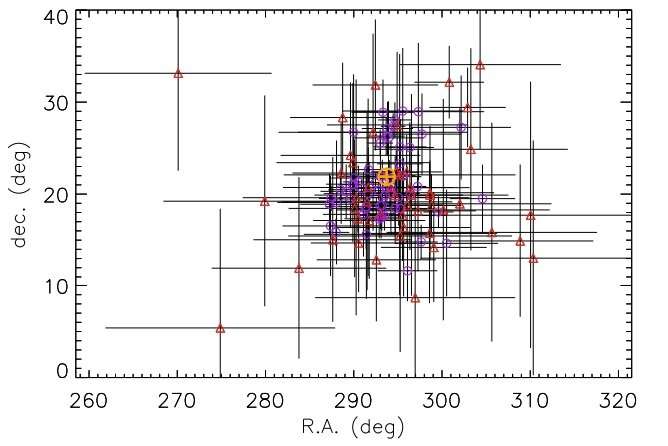March 31, 2020 report
Study determines burst properties of the most recurring transient magnetar

Using NASA's Fermi and Swift spacecraft, astronomers have investigated SGR J1935+2154, the most recurring transient magnetar known to date. The new research sheds more light on the burst properties of this object. The study is detailed in a paper published March 23 on the arXiv pre-print repository.
Magnetars are neutron stars with extremely strong magnetic fields, more than 1 quadrillion times stronger than the magnetic field of Earth. Decay of magnetic fields in magnetars powers the emission of high-energy electromagnetic radiation, for instance, in the form of X-rays or radio waves.
Discovered in 2014, SGR J1935+2154 has a spin period of 3.24 seconds, spin-down rate of 14.3 picoseconds/second, and a dipole-magnetic field with a strength at a level of approximately 220 trillion G, what confirms its magnetar nature. Since its detection, the source experienced more than 100 bursts, occurring almost annually.
A team of astronomers led by Lin Lin of Beijing Normal University, China, studied SGR J1935+2154 using Fermi and Swift. The observations were focused on 127 short bursts that took place between 2014 and 2016.
"We report the results of our extensive search for short bursts from this prolific transient magnetar using a Bayesian block method to search the Swift/BAT and Fermi/GBM data," the astronomers wrote in the paper.
According to the study, 97 percent of the observed bursts occurred during four active burst episodes, which makes SGR J1935+2154 the most prolific magnetar transient to date. In general, prolific magnetar transients are sources emitting more than 10 bursts during an active burst episode.
The astronomers noted that the total energy fluence emitted in their burst sample is 0.000062 erg/cm2, which corresponds to 1.5 duodecillion erg, if the estimated distance to SGR J1935+2154 (approximately 29,300 light years) is true.
It was found that the persistent X-ray flux increase of SGRJ1935+2154 is modest at the onset of each outburst and its value changed by factors of five to 10. This is much lower than the value in most transient magnetars, as they usually showcase X-ray flux increases at a level of between 50 and 100 at the activation onset.
The observations revealed that the majority of bursts in the 2014 and 2015 active episodes took place on the first day of the episode, before subsequently decaying over 100 days. The astronomers added that two episodes in 2016 commenced with two or three bursts and that two outbursts that year were brighter at the onset than those in 2014 and 2015, quickly decaying to the quiescent level.
"This connection between bursts and outbursts strongly indicates that the total energy released in short bursts accelerated the fading of the persistent outburst (at least one component of the persistent emission)," the researchers concluded.
More information: Burst properties of the most recurring transient magnetar SGR J1935+2154, arXiv:2003.10582 [astro-ph.HE] arxiv.org/abs/2003.10582
© 2020 Science X Network





















